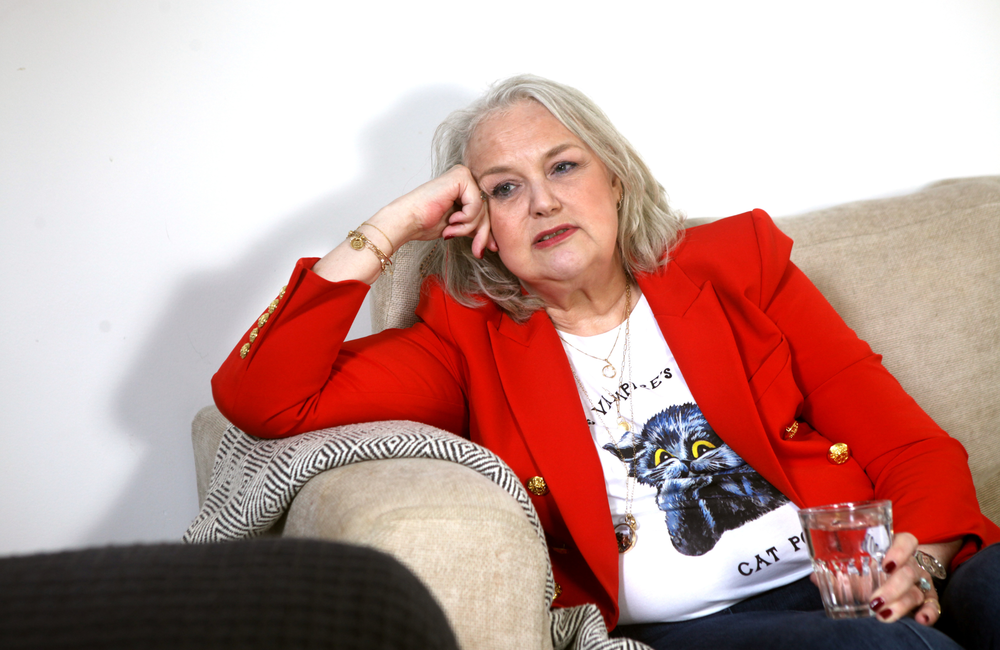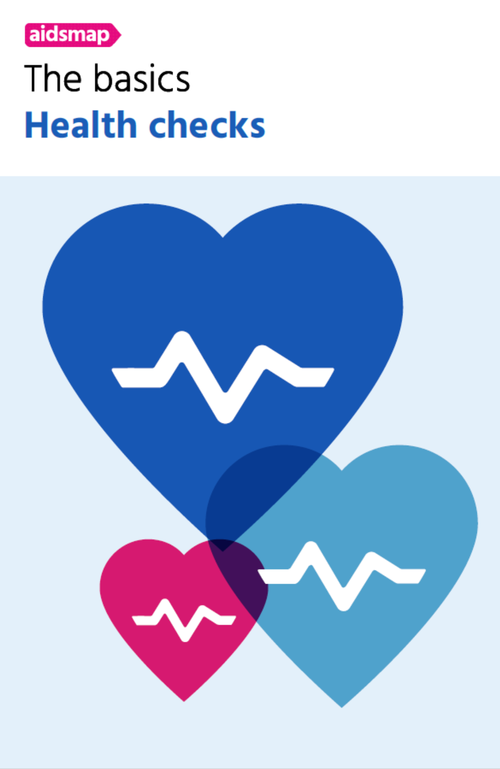
Key points
- When your bones are weaker, a trip or fall can result in a broken bone.
- Weight-bearing exercise and other lifestyle changes are good for your bones.
- People aged 50+ and women who have had the menopause should have their bone health checked regularly.
Bone is living tissue, which means that old, worn-out bone is constantly replaced by new bone throughout your life, in order to maintain bone health. It is normal for the process of new bone being made to slow down as you get older. This makes bone problems more common in older people. Bone problems are especially common for people who have gone through the menopause.
If the amount of new bone being made doesn’t keep up with the loss of old bone, your bones become less dense and lose some of their strength. Following a minor trip or fall, the bones may be more likely to break.
What is osteopenia?
You might be told that you have low bone mineral density or osteopenia. This means that your bones are less dense than is normal for your age. It doesn’t mean that you will definitely develop osteoporosis or have a fracture. But it’s a warning sign and you can make lifestyle changes to reduce the risk of problems occurring.
What is osteoporosis?
If your bone mineral density continues to get lower, you might be told you have developed osteoporosis. This means that your bones are less dense and weaker than they should be. If you have osteoporosis you’re at an increased risk of bone problems such as breaking a bone (fracture).
Your lifestyle and bone loss
You can reduce your risk of osteoporosis by making changes to your lifestyle.
- Get enough vitamin D. Most people get their vitamin D from summer sunshine on their skin. In the UK, everyone should consider taking a vitamin D supplement in the winter. If you have dark skin, don’t get outside often, or usually cover yourself up, you may want to get advice from your doctor about taking a vitamin D supplement all year round. Oily fish (like sardines and mackerel), fortified cereals, egg yolks and liver are also sources of vitamin D.
- Get enough calcium. Good sources of calcium include dairy products, dark green leafy vegetables, fortified non-dairy products, nuts, bread, and fish where you eat the bones (such as sardines and pilchards). It’s best to get calcium through food rather than supplements, but if you take a supplement, a combined calcium and vitamin D supplement is best. You can use this online tool to find out if you have enough calcium in your diet.
- Get plenty of exercise. Try different types of exercise to strengthen your bones and muscles. Any weight-bearing exercise and activities that promote balance and good posture are beneficial for your bones. Exercising outside, such as going for a walk outdoors, can also help you get vitamin D from sunlight.
- Limit your intake of alcohol. In the UK, the recommended limit is no more than 14 units a week. Consuming more than two alcoholic drinks a day is associated with lower bone density. Being under the influence of alcohol can also increase your risk of falling.
- Don’t smoke. If you are a smoker, you can get support to stop smoking from your doctor.
If you already have low bone mineral density or osteoporosis, these lifestyle changes might be able to prevent the problem from getting worse. Your doctor can give you advice on physical exercise that is safe for you. Exercises to improve your balance and build muscle strength will help to prevent falls.
Who is at risk?
There are also some things which increase your risk of osteoporosis which you can’t change.
- Your risk increases as you age as you lose bone over time, so older people are at higher risk.
- Women are more likely to develop osteoporosis at a younger age than men, and are especially at risk after the menopause.
- Having a parent or sibling with osteoporosis, especially if one of your parents has had a fractured hip.
- Hormonal imbalances (such as having too little oestrogen or too little testosterone).
- Medications that affect your hormone levels.
- High doses of medications such as corticosteroids like prednisolone and hydrocortisone.
Breaking a bone after a simple fall from a standing height may be a warning sign that your bones aren’t as strong as they should be. It’s important to get your bone health checked if this happens.
Having hepatitis C also increases your risk of osteoporosis.
Bone loss in people living with HIV
Rates of osteopenia and osteoporosis are higher in people living with HIV than in the general population. There is also evidence that bone problems might happen at a younger age.
One reason for this might be the impact that HIV has on your body. For example, HIV causes chronic inflammation. Chronic inflammation is when your immune system has an unhelpful reaction to the virus over a long time. It’s thought that this might increase bone loss by activating cells that break down bone tissue.
Rates of osteopenia and osteoporosis might also be higher because many people living with HIV have more risk factors, such as smoking, drinking, or not getting enough exercise.
Anti-HIV medications
Taking HIV medication is the most important thing you can do for your health. However, starting anti-HIV medication can also affect your bones. This usually happens shortly after starting HIV medication, especially if you have been living with HIV for a long time before starting treatment. This can happen when you start any type of HIV medication.
There is also a direct link between the anti-HIV drug tenofovir disoproxil (Viread, also in the combination pills Delstrigo, Truvada, Atripla, Eviplera and Stribild) and small losses of bone density, usually during the first year of taking the medication. People who use the Depo-Provera contraceptive injection and take anti-HIV medication containing tenofovir disoproxil may be at a higher risk of bone loss.
Switching from tenofovir disoproxil to tenofovir alafenamide (in the combination pills Descovy, Genvoya, Odefsey, Symtuza, and Biktarvy) seems to increase bone mass again. However, changing your HIV treatment is usually only recommended if you have been diagnosed with a bone problem or if you have risk factors for bone problems.
Protease inhibitors (such as atazanavir) may also raise the risk of bone loss compared to other HIV medications.
If you’re concerned about your bone health, speak to your HIV clinic team.
Symptoms
There is usually no warning that you have bone loss, even if you have developed osteoporosis. It is usually only diagnosed when a bone, such as a hip or femur, is fractured after a minor fall. But osteoporosis can cause tiny fractures in your spine which can cause back pain, as well as causing you to shrink and or have a hunched forward posture.
Diagnosis and monitoring
You should have blood tests that help doctors understand your bone health at least once a year at your HIV clinic.
You might also have a bone fracture risk assessment. This will involve answering questions about your lifestyle, such as whether you smoke, and questions about your medical history, such as whether you take steroid medications. Looking at all this information helps your doctor understand your risk of having a fracture because of bone loss.
In Europe, guidelines recommend that you should have a bone fracture assessment once every two years if you’re over 40. In the UK, the guidelines say this should happen if you’re over 50, every three years. You might be offered a bone fracture assessment at a younger age or more often if you have certain risk factors, such as Crohn’s disease or a parent who had a hip fracture.
You might also have a bone density scan (sometimes called a DEXA scan). This is done using a machine that uses low levels of X-rays to measure the amount of mineral in your bones. During the test, you lie on a padded table as a scanner passes over your body. The test doesn’t hurt. Usually, the bones in your hip and spine are checked.
Treatment and management
For people who have an increased risk of fracture, the lifestyle changes described earlier in this page are recommended. If you have osteoporosis you may be offered medications to help.
Medication
The most common medication used is bisphosphonates. They include alendronic acid (Fosamax) tablets, taken either daily or weekly. There are no interactions between alendronic acid and any anti-HIV medications.
Hormones
If you are experiencing symptoms of menopause, you might be prescribed hormone replacement therapy (HRT). An extra benefit of HRT is that it lowers the risk of fractures while you are taking HRT. Transgender women taking gender-affirming hormone therapy may also increase their bone mineral density.
Supplements
Your doctor might check if you are getting enough vitamin D and calcium. If not, they might prescribe a supplement of one or both of them.
Preventing falls
If you have osteoporosis, falling can be more dangerous for you. Wear low-heeled shoes with nonslip soles and check your house for electrical cords, rugs and slippery surfaces that might cause you to trip or fall. Have your eyes checked regularly, keep rooms brightly lit, install grab bars just inside and outside your shower door, and make sure you can get into and out of your bed easily. Your healthcare team can also give you advice on preventing falls.
In the UK, the medical speciality which deals with our bones and joints is called rheumatology. It’s best for the doctors treating your bone health and your HIV to speak about your health care. In order for this to happen, you need to give them your permission. You can also ask your doctors and pharmacists to check that there are not any harmful interactions between the different medicines you are taking.
Other sources of information
For more information, you may find The Royal Osteoporosis Society helpful. Visit their website www.theros.org.uk or call their helpline (from the UK) on 0808 800 0035.
Thanks to Dr Neale Weitzmann and Dr Anjali Sharma for their advice.

